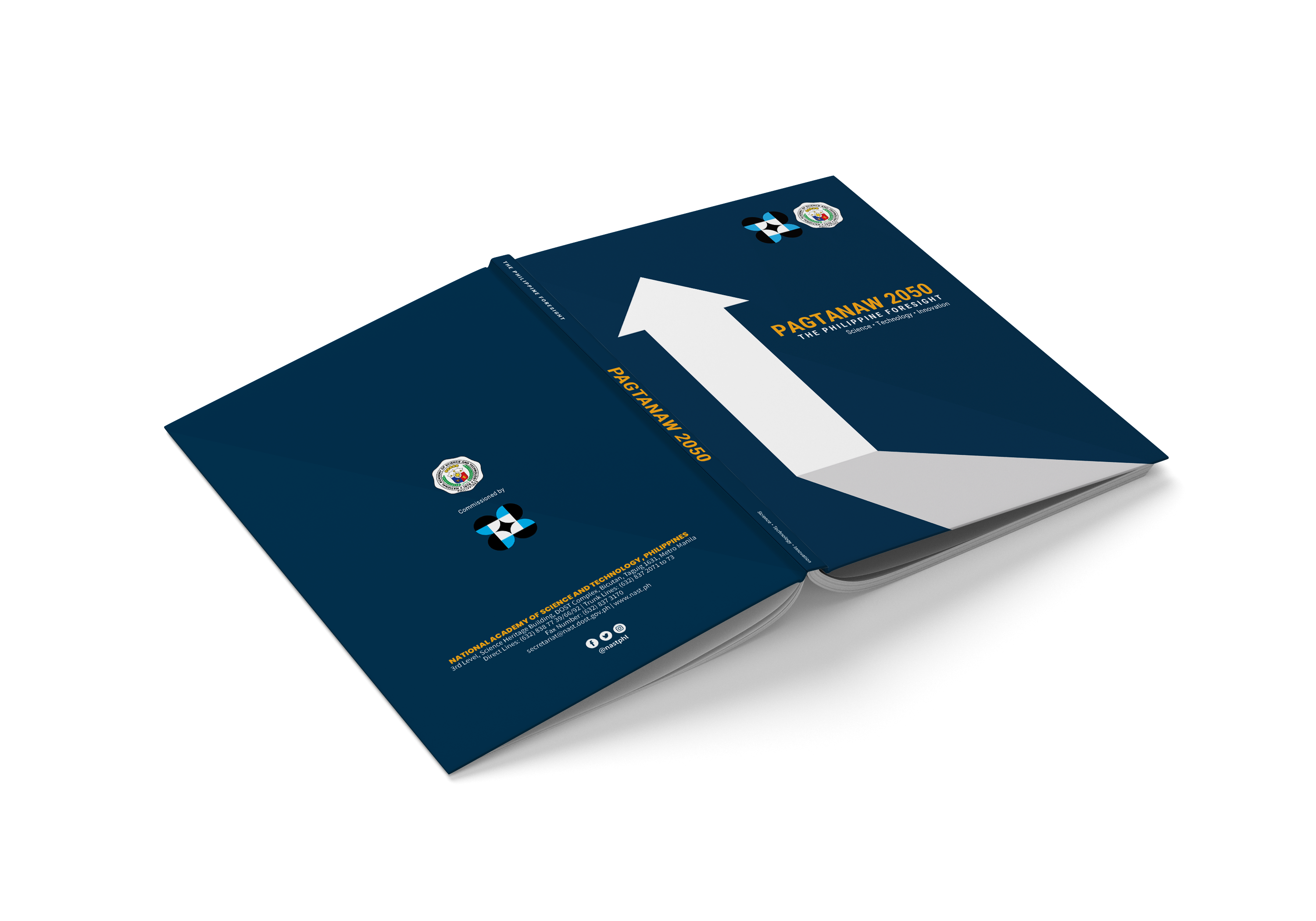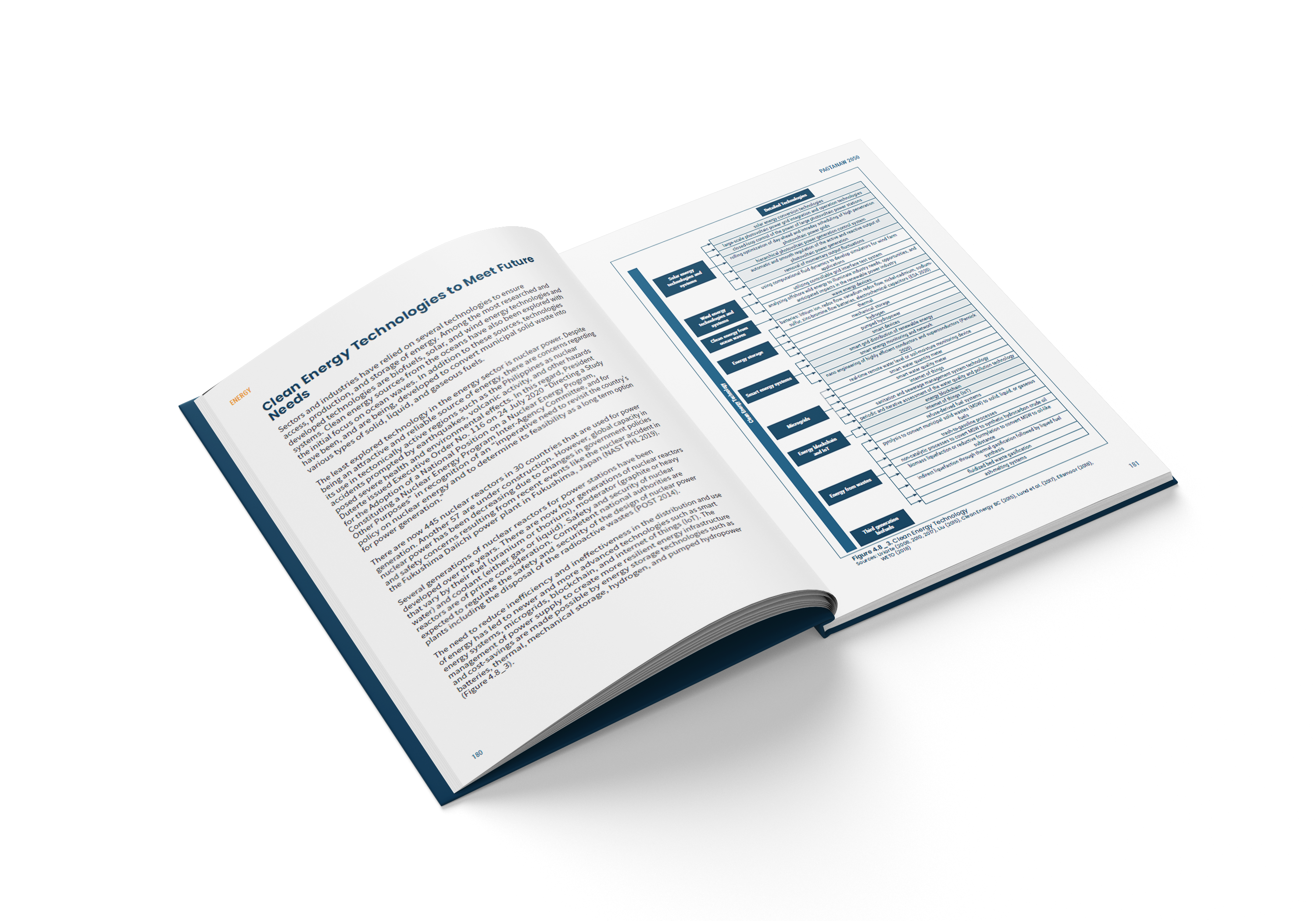At the core of this Foresight are 12 key operational areas, outlined below, which can enable the realization of our societal aspirations through a unified STI agenda:
Section 4.1 – Blue Economy
The “Blue Economy” is an overarching operational area that highlights the Philippines’ inherently archipelagic nature and resources, pointing towards the sustainable use of marine resources—living and non-living—for the improvement of people’s livelihoods while preserving the overall health of our marine ecosystems.
Section 4.2 – Governance
Having effective and well-governed institutions are essential to establishing an environment of high rates of investment and improved workforce performance in both the public and private sectors. Strategic technologies can be harnessed for both the government and private sectors to provide quality services, minimize human errors, reduce unreasonable bureaucratic procedures and unnecessary expense, and ultimately achieve administrative efficiency and timely response.
Section 4.3 – Business and Trade
The Philippines has yet to establish a track record of translating scientific research into commercial products, the prospects can be improved dramatically by considering the business community’s fundamental capacity as both beneficiary and enabler of innovation. In particular, the Philippines should provide a level playing field for our agriculture, industry and service sectors whose processes are especially friendly to innovation and research and development (R&D). However, this will not happen if the high cost of doing business—which includes the cost of energy—stemming from the poverty of public goods is allowed to persist.
Section 4.4 – Digital Technology/ Information and Communications Technology
In this key operational area, information and communications technology (ICT) is seen as a linchpin for achieving proficiency in STI in the Philippines. The full realization of the benefits of ICT will necessitate a shift towards a robust and accessible Digital Ecosystem, in which Digitally Transformed entities interact with each other, mutually benefit each other, and promote the greater good. Technologies like blockchain, cognitive systems, robotics, and quantum computing including last-mile connectivity to serve users in rural and remote areas are required of this ecosystem.
Section 4.5 – Science Education and Talent Retention
The importance of the Science, Technology, Engineering, and Mathematics (STEM) system of education in producing competitive STEM talent in the Philippines is vital in enhancing, maintaining, and monitoring the knowledge infrastructure in STEM. We need to adopt new out-of-the-box pedagogies that emphasize learning by doing.
Section 4.6 – Food Security and Nutrition
This operational area highlights the ability of agriculture to increase and diversify production towards the improved nutritional status of the population through new and science-based food system paradigms. In order to achieve desired nutritional outcomes, a sustainable food system should be characterized by green and inclusive growth, economic and social progress, and resilience to multiple risks.
Section 4.7 – Health System
Foresighting the Philippines’ health, STI is anchored in achieving an efficiently working and properly funded Universal Health Care Program, which addresses needs that are real, palpable, and which immediately improve human lives. At the moment of writing this Foresight, the Philippines Response is focused towards managing the COVID-19 pandemic. Many of the health system technologies accelerated by the pandemic are quite useful for strengthening the healthcare delivery system.
Section 4.8 – Energy
Since the Philippines is dependent on imported fossil fuel for its energy needs and the energy sector is among the major contributors to greenhouse gas emissions and climate change, it is essential for the country to transition to clean and affordable energy technologies to meet future needs. Priority should be given to solar, wind, and ocean waves energy systems, energy storage, smart grids and networks, biofuels, and energy from wastes.
Section 4.9 – Water
Water resources, water uses, and regional water quality, demand and supply in the Philippines must be managed with regard to their use for domestic water supply, irrigation, flood control, power generation, and pollution control. Clean technologies will be adopted to improve the delivery of affordable clean water, minimize or prevent the production of wastewater effluents, and reduce the cost of water and wastewater treatment.
Section 4.10 – Environment and Climate Change
The Philippines is a hazard prone country and periodically suffers from extreme weather conditions, earthquakes, volcano eruptions, and other natural hazards. It is also one of the countries that are most vulnerable and at risk to climate change. Consistent with Goal 13 of the United Nations’ Sustainable Development Goals, the Philippines must adopt global and local actions to combat climate change and manage its impacts by strengthening resilience and adaptive capacity to climate-related hazards and other natural hazards.
Section 4.11 – Shelter, Transportation, and Infrastructure
Secure shelter and good transport facilities are minimum basic needs that are fundamental to what Filipinos aspire for as “maginhawang buhay” (comfortable life) and “panatag na buhay” (secure life), as discussed in AmBisyon Natin 2040 and which still remains relevant within the extended 30-year timeframe of the Foresight. Considering the archipelagic setting and maritime nature of the country, the national aspiration to balance urban and rural development can only be achieved through the improvement of ports, roll-on-roll-off facilities, expressway and road networks, and public transport, coupled with a strategic combination of various water, land, and air transportation modes. Shelter is needed in different forms as residence, refuge, and building as a vital component in organizing smart communities in both urban and rural settings.
Section 4.12 – Space Exploration
Space-based technologies have important applications in communications, weather forecasting, disaster management, natural resources and land use management, and in monitoring the environment. Current upstream and downstream space initiatives and future plans on space technologies must continue to be enhanced.




